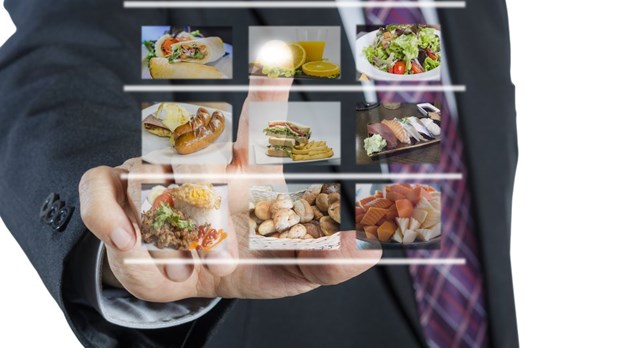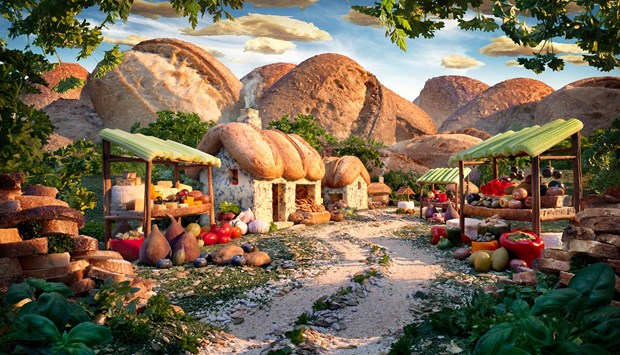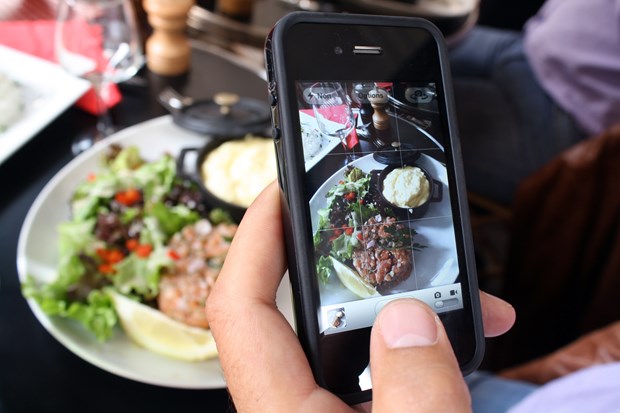
Photo of Fast Casual
When
the whole society thrives and living cost increases, human needs are pickier
and more delicate. People
don’t just need to eat or to wear but we all care about what we eat and how to
dress. With Gen Z (people who were born in and after 2000) and other young
generations, those essential needs have dramatically changed: instead of buying
house, they spend money on travelling; instead of nice clothes, they wear
stylist pieces; and instead of delicious food, they choose organic and healthy
ingredients.
Because
need of food is relentlessly changing, culinary trends of the world have
altered to match. The big guys of processed food and fast food industry in the
world have become less popular while small or family-run businesses have
stepped up. Processed food (canned and frozen) and fast food are not convenient
enough for consumers to choose over their health. They rather pay extra money
to get fresh-cooked meals. More importantly, obesity (both children and adults)
and other illness symptoms from dirty food have been spreading so widely that
we have to seriously look at our choices of food. Nowadays, modern and urban
consumers tend to go with environment-friendly products from small
suppliers/producers, who are easier to track down their sources. Together with
culinary trends, the term “foodscape” is getting worldwide with more
understandable ideas and more useful applications for daily life. Foodscape is even considered as the
language of Gen Z and, of course, people who catch and follow its new trends.
So,
what is foodscape?

Foodscape. Photo of Artifex.Ru
This
term was first defined by Anthony Winson, a Canadian sociologist, saying, “the
multiplicity places where food is displaced for purchase, and where it may also
be consumed”. Generally, where we come to buy food (markets, groceries), where
produces or cook food (kitchens, restaurants, food factories), where we consume
food (restaurants, cafeteria), or even a place where we sit and talk about food
are our foodscape.
When
the need of food is looked differently - not for quantity but quality, not for
filling up the stomach but enjoying dainty and healthy dishes, personal foodscape is so practical and it has
real influences to our life. For examples, you live in an urban neighbor where
locate a convenient store for instant and frozen food, a grocery store, a fancy
restaurant, and plenty of fast food restaurants; so it’s highly potential that
your daily meals are fast food from those places or you will cook with
something from your neighbor grocery store. Another example is if you live in
suburb, where has only one grocery store and daily or weekly farm markets,
definitely you have to cook with fresh ingredients. When we really pay
attention to our personal foodscape,
we will clearly see the sources of our daily food and our food habits then we
can recognize how good or bad that our choices of food affect our health.
Sociologist
Anthony Winson has written critically about the vast amount of processed foods
and fast food restaurants clogging Canadian and U.S. foodscapes (as well as arteries) – a tremendous market was
dominated by convenient but unhealthy food, Reflecting on the so-called obesity
“epidemic” all over North America. Consequently, healthy eating becomes the
burden of the individual shopper who must learn to navigate their grocery store
and neighborhood in search of healthy food.

Photo of KeywordSuggest.org
With
justifiable and totally NOT new of consumers, digital foodscape was
born and became a practical tool for modern housewives, busy officers, and gen
Z – an enthusiastic and open-minded target to lead and spread the new trends. Digital foodscape is like a social network, where everyone can chat, raise
questions, interact, meet, and connect to others basing on the only interests:
food and its related issues. Topics can range from “what is the best milkshake
in town”, “the X. bakery always delivers fresh bread at 4pm”, to “what fresh
veggie you have on weekend”, and “how to grow organic lettuce at home”.
This
is a great location where small and family-run businesses can directly contact
consumers and consumers can be provided all real information without any
commercial ads or ambassador faces. Good things should go viral very quick in digital foodscape (and so does bad experiences). In Vietnam, we do have
some popular foodscapes, such as Foody or food blogs.
After
a long age of industrial food, the empire of big food corporation is swinging
when a new trend has risen from educated consumers. In the meantime, small and
family-run businesses once again seize the chance to approach an unlimited
amount of potential clients in an open space, to freely compete, and to
relentlessly create new products.
By Thu Pham